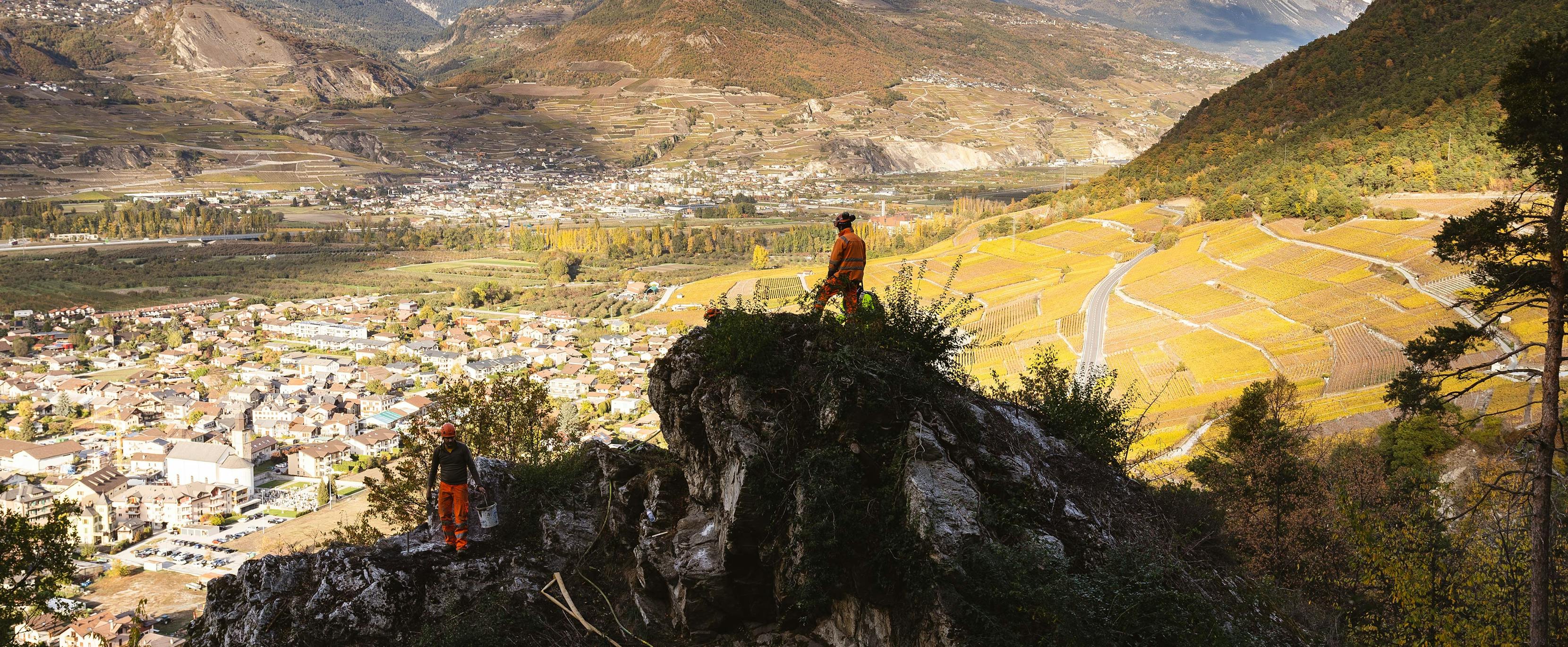Protective measures for the Chamoson – Chippis line
In every powerline construction project, Swissgrid must meet very precise risk management criteria. With this in mind, the company relies on recognised experts and technical studies to validate the feasibility and to realise the projects.
In the case of the Chamoson – Chippis line, Swissgrid is depending on several rigorous technical studies, recognised by experts and the law. Each natural hazard zone crossed by the line is listed and monitored by the Canton of Valais and its respective departments. Detailed planning per pylon is carried out in order to define and ratify the construction parameters. As each pylon is erected on a different type of surface, it is essential for Swissgrid to understand the environment in which it will be constructed perfectly.
This process allows specific technical protection solutions to be defined for each natural hazard zone. Moreover, Swissgrid is collaborating with the municipal authorities and the Canton of Valais in the application of technical protection measures for several pylons in natural hazard zones. In these cases, the goal is to identifie extended joint solutions that will enable the protection of not only the pylons but also cantonal and municipal roads, industrial zones and homes.
List of potential protection measures
Against land movement
Placement of one to four ground measuring devices (inclinometers) per site. Based on the data collected over a period of a year up to 18 months, the potential adaptive measures will be defined, including:
- Reinforcement of foundations
- Deepening of foundations
- Securing of pylon feet through reinforced concrete girders
Against rock falls
- Placement of rock fall protection netting
Against debris flow



